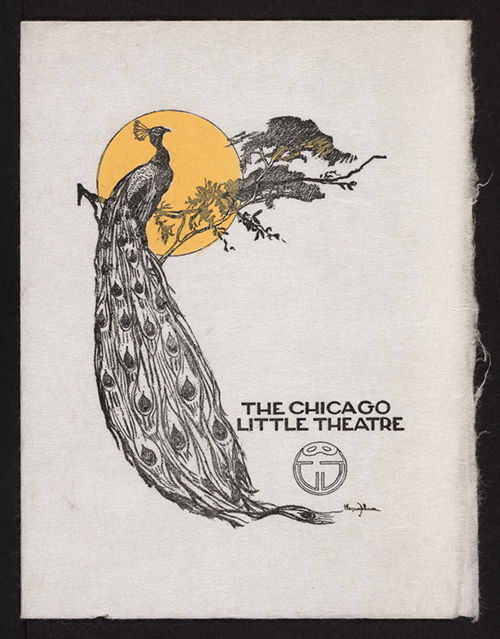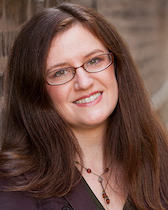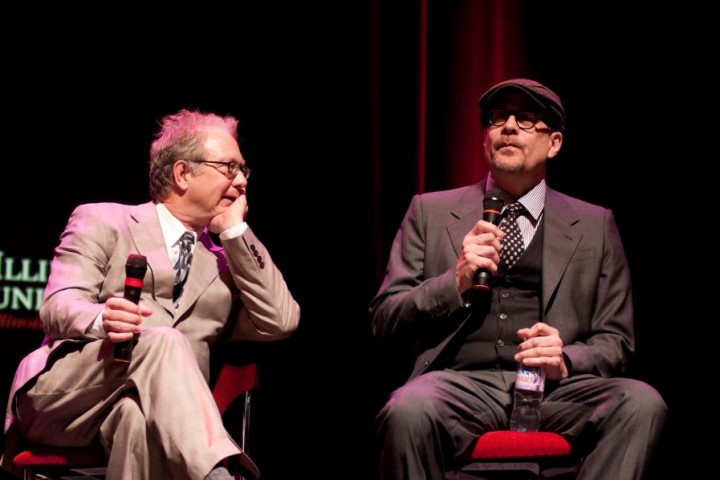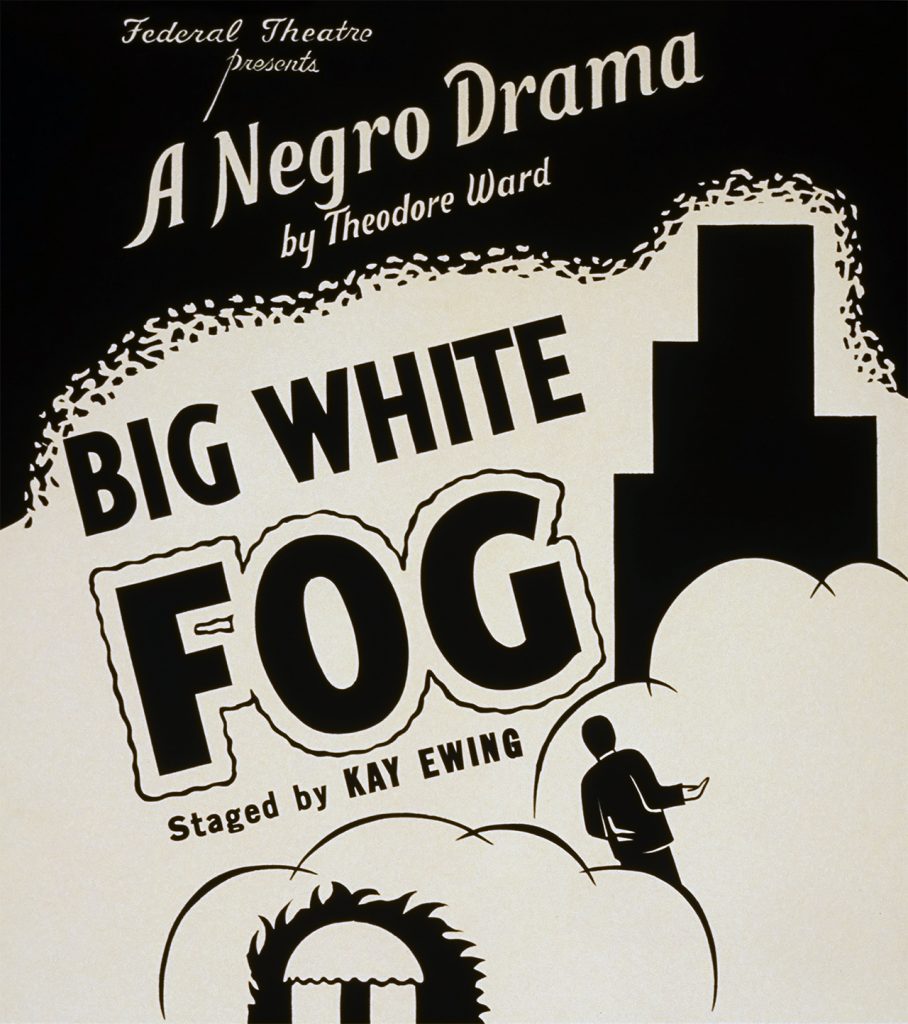With a history of rising from the ashes, Chicago’s often hard-working, survival mode gives birth to a tenacious renewal steeped in innovation.
The new book, Makeshift Chicago Stages: A Century of Theater and Performance (Northwestern University Press), explores Chicago theater as a reflection of the city’s personality.
“If you try and tell someone from Chicago ‘it can’t be done,’ the response is usually, ‘Really? Watch me,’” said Dr. Shannon Epplett M.A. ’11, an assistant professor at Illinois State University and one of the authors of the new book.
“There is surprisingly little scholarship about Chicago theatre,” said Illinois State alumna Dr. Megan Geigner B.A.’01, M.A.’03, who is one of the editors of the book. “You might hear about large theaters, like the Iroquois, but not about the many non-commercial theaters that were and are connected to the Chicago way of life. And per capita, Chicago has the largest number of theaters in the country.”
Chicago’s use of “makeshift stages,” or theater performed in places never designed for it, shines as a part of the city’s legacy of remaking and repurposing space. Since its earliest years, performances and companies flourished in empty storefronts, bars, basements, and buildings that include everything from abandoned factories to left-over souvenir stands from the 1893 World’s Columbian Exposition. Though understood as a natural feel of Chicago theatre, it is a history not often told.
Telling the story of Chicago’s makeshift theaters became a passion for Geigner, an assistant professor at Northwestern University. She called upon the small and hardy band of scholars telling the tale of Chicago theater with the running theme of remaking space. Along with Geigner and Epplett, eight other authors delve into topics that include the Chicago Little Theatre, immigrant theater at the Goodman, Teatro Vista, and the Chicago Home Theater Festival.
Two more Illinois state alumni contributed chapters, Dr. Travis Stern B.A. ’00, MA. ’02, who teaches at Bradley University, and Dr. Aaron Krall M.A. ’01, who teaches at the University of Illinois-Chicago. “The ISU thread seems to connect so much,” said Epplett, who met the fellow Redbird scholars at conferences. “And, of course, there is the ‘Steppenwolf scenario’.”
These makeshift stages go back practically to the beginning of the city. It is a uniquely Chicago invention.
Dr. Megan Geigner, B.A.’01, M.A.’03
Steppenwolf Theatre Company is often considered the model of makeshift stages, beginning in a basement and evolving into a globally recognized presence. Two of the co-founders are Illinois State alumni, Terry Kinney and Jeff Perry. Famed members include ISU alumna Laurie Metcalf and John Malkovich.
“I think every theater person who arrives in Chicago has the dream of starting the next Steppenwolf. I know I did, even before I had seen the theater itself,” said Epplett with a small smile. “Chicago theater is hope wrapped in a can-do feeling. You can find a cheap space and create something new, surrounded by people who will constantly support one another. Fall on your face and it doesn’t end your career. It’s a communal and welcoming environment that makes the city an incubator for art.”
That incubator essence began long before Steppenwolf, noted Geigner. “These makeshift stages go back practically to the beginning of the city. It is a uniquely Chicago invention.”
Chicago theater is hope wrapped in a can-do feeling. It’s a communal and welcoming environment that makes the city an incubator for art.
Dr. Shannon Epplett
Three years after the signing of the Indian Removal Act, Chicago was founded in 1833, a legacy of the trading post established by trader Jean-Baptist-Point Du Sable of Haitian descent. Makeshift Chicago Stages references a theater company performing in a dining room as early as 1837. The city became a hub for innovation after the devastating fires in 1871 and 1874. The feathers from the phoenix that emerged included the birth of the minimalist Chicago School of Architecture and the integration of fire-proof terra cotta in building material, the first U.S. city to require it.
Mirroring that foundation of ingenuity, Chicago theater created a legacy of repurposing space. By the early 1900s, the city was on the leading edge of an alternative art theater movement, forged ahead by performances from Jane Addams’ Hull House and the Chicago Little Theater founders Maurice Browne and Ellen Van Volkenburg. The couple sought to rent a space in the flourishing Fine Arts Building that was once the space for manufacturing and a showroom of Studebaker horse carriages. “They took one look at the massive 1,000-seat theater and told owner Charles Curtiss, “No. This will not do at all,” said Epplett, who penned the chapter on the Fine Arts Building. “They wanted a small, intimate space, where Ellen could experiment with electric lighting for intimate productions of new works by playwrights such as Henrik Ibsen and William Butler Yeats.”

Epplett added that no matter the challenges, Browne and Van Volkenburg maintained a belief in the possibility that something can be created from nothing. “It was an aesthetic optimism in the face of adversity that is definitive of Chicago’s theater culture,” said Epplett.
The Goodman Theater at the Art Institute became one of the first institutional sites for the Little Theatre movement. Hull House’s Marionette Players ran a production of Eugene O’Neill’s Anna Christie with a cast made up almost entirely of actors with immigrant backgrounds, noted Geigner, who contributed a chapter on the Goodman and immigrant theater. “There were full casts from Irish, German, and Russian Jewish backgrounds. Producers invited disparate and diverse groups onto the Goodman stage,” she said, adding in that the Goodman hosted a Greek Arts Festival with Greek immigrants performing folk dance demonstrations and a Greek-language production of Oedipus. “This wasn’t well-to-do women performing Ode to a Grecian Urn,” said Geigner.
Chicago’s makeshift stages offered space, but space can be more than a location. Space can be social and symbolic, conveying a sense of belonging or isolation. It can be as vast as an industry, or as compact as a human body. Space is often navigated, negotiating who has the right of occupancy, and who should have a voice.
“When you are pushing against boundaries and figuring out how to get your voice out there, it makes for exciting theater,” said Krall, whose chapter focuses on the staging of the play Big White Fog by Theodore Ward.
“Big White Fog was A Raisin in the Sun before A Raisin in the Sun,” said Krall of the play that follows the struggles of a Black family coming to Chicago with the Great Migration and the impact of living in the “Black Belt” of Chicago in the 1930s. “Big White Fog was about racial politics and the racial dynamics of the city at the time. It invoked a lot of controversy for its honest conversations.”
Funded by the New Deal’s Negro Unit of the Federal Theatre Project in Chicago, the play opened in 1938 at the Great Northern Theater in the business district known as the Loop. “Producers of the play wanted a downtown theater, so they could reach an integrated audience,” said Krall. After two months of well-attended productions, the Big White Fog was abruptly moved to a South Side high school gymnasium, where it quietly closed not long after for reasons that are debated. “No consensus is given on why the play moved or closed,” said Krall. “But the production speaks to the way Chicago has always been a place where artists seek out non-transitional or unconventional ways of making theater.”
Unconventional is the perfect word to describe the improvOlympic (iO), which formed in Chicago in 1981 and reimagined improvisational performance. “Improv is the ultimate form of makeshift theater,” said Stern ’00 ’02, who devoted his chapter to the evolution of iO. “There is a lovely attitude in Chicago that almost dares people to say no.”
Stern, an associate professor, has studied improv theory since 2001. “iO was the first to move away from humor solely as sketch comedy. Second City performers put on a sketch show, then let audiences stay for free to see something unscripted,” said Stern. The chapter explores how iO sought to legitimize improvisational theater, a challenge that never ceases. “Each show cannot be duplicated. Each show is opening and closing night, never to be duplicated,” said Stern, “but that is a bit like Chicago as well—everchanging.”
From the city’s earliest days in the 19th century to contemporary performances, Chicago’s makeshift stages practically dare people to say it cannot be done, just so they can respond, “Really? Watch us.”
Makeshift Chicago Stages: A Century of Theater and Performance is available now.






